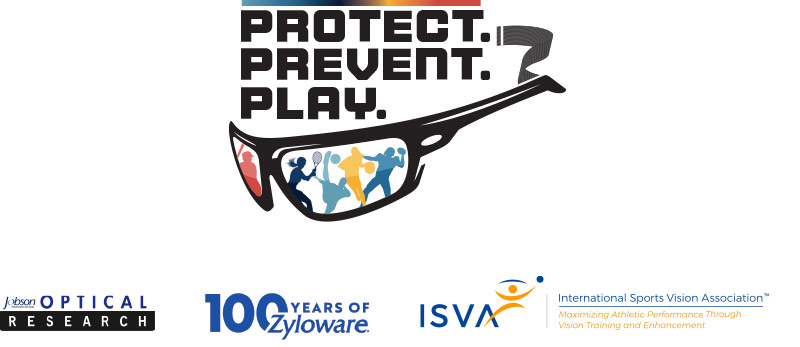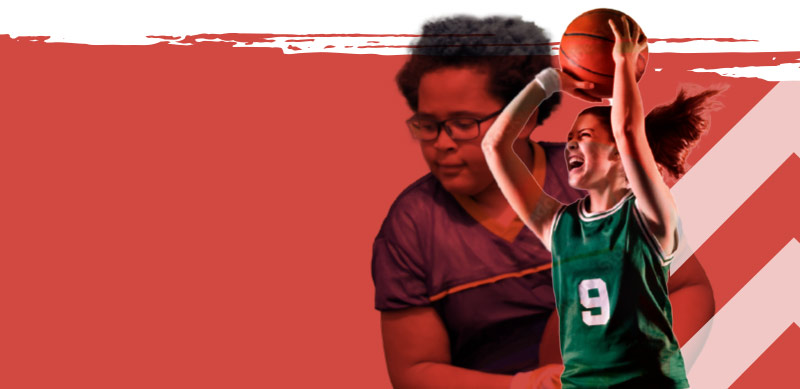
The Sports Eye Injuries & Protective Sports Eyewear study was conducted by Jobson Research in conjunction with the International Sports Vision Association (ISVA) and Zyloware Eyewear. The purpose of the survey was to understand eye care professionals’ experiences in treating sports-related eye injuries and to gauge their knowledge and attitudes about sports protective eyewear, along with factors that influence their decision to recommend sports protective eyewear to their patients.
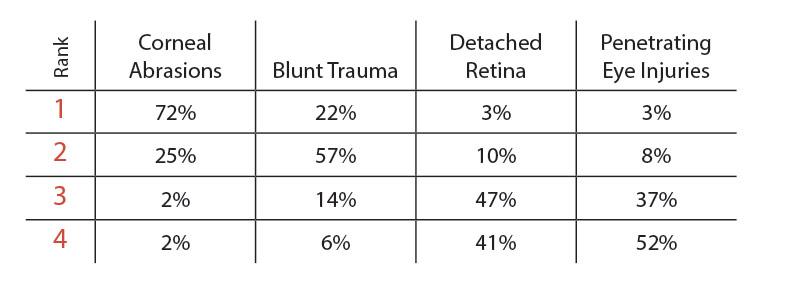
/ / TREATING SPORTS RELATED EYE INJURIES
Eight in ten respondents (79%) report that within the last five years their office has treated patients who have suffered a sports-related eye injury. Respondents report that they most often treat Corneal Abrasions, with 72% stating this is the most common sports related injury they treat. Blunt Trauma was the second most common, followed by Detached Retina and then Penetrating Eye Injuries.
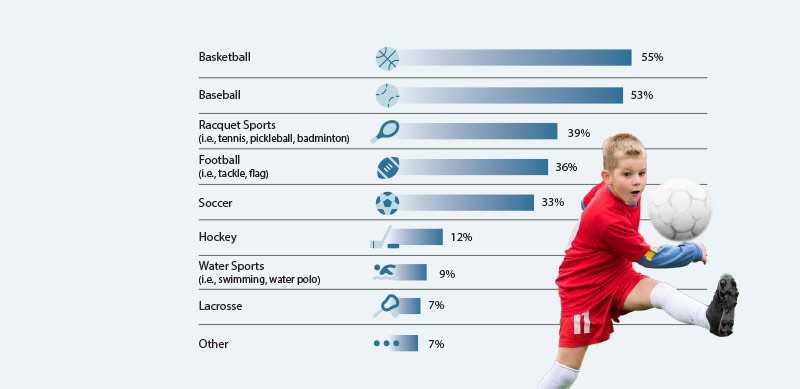
/ / SPORTS AND EYE INJURIES
More than half of respondents say Basketball (55%) and Baseball (53%) are the sports that are the cause of most of the sports related eye injuries they treat. About four in ten (39%) say they often treat eye injuries associated with racquet sports such as tennis, pickleball, and badminton and flag or tackle football (36%). Soccer (33%), Hockey (12%), Water Sports (9%) and Lacrosse (7%) were other top sports related activities that eye care professionals say are the causes of most of the sports related eye injuries they treat.
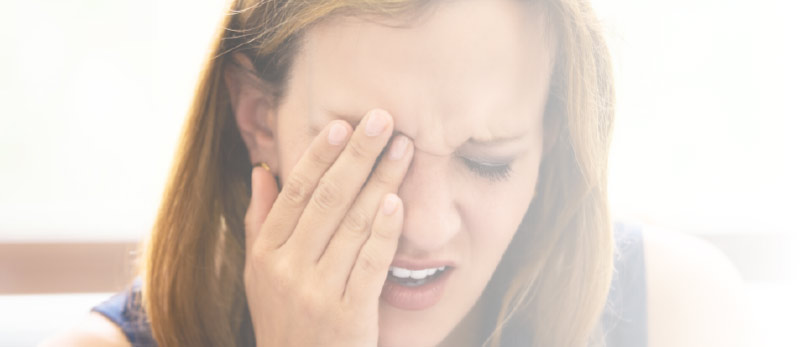
/ / AVERAGE AGE OF PATIENTS REPORTING EYE INJURIES
More than half (53%) of respondents note that most sports related eye injuries they treat are among Teenagers (13-19). The next most common age group is Young Adults (20’s), followed by children (12 and under), Adults (30-50), and older Adults (50+).
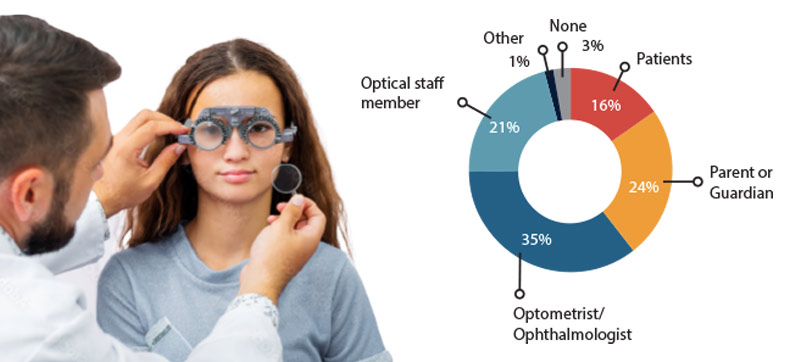
/ / SPORTS ACTIVITIES AND EXAMS
During eye exams or other office visits, three-quarters (77%) of respondents say they are proactive in asking patients about the sports/leisure activities/hobbies they participate in.
However, when it comes to talking about protective sports eyewear, only just over half (56%) say someone at their practice initiates the conversation. About one in three (35%) report the Optometrist/Ophthalmologist will bring the subject up first and 21% say it’s an Optical Staff member. Four in ten respondents say the subject is generally introduced by Parents/Guardians (24%) and Patients (16%).
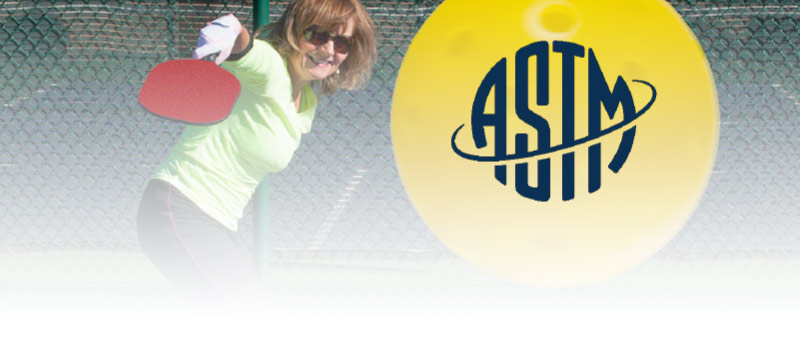
/ / ASTM STANDARD
ASTM International, one of the largest voluntary standards developing organizations in the world, sets the standards that eye protection must meet to help prevent eye injuries in different sports. While virtually all respondents (97%) agree that it is important that protective sports eyewear meet the appropriate ASTM standard for specific sports, nearly three-quarters (75%) of Opticians/Dispensers see it as “very important” compared to only 54% of Optometrists/Ophthalmologists.
When asked how familiar they are with the ASTM international standards for protective sports eyewear, only three in ten (30%) survey respondents are “very familiar” while half (50%) are “somewhat familiar” and 21% are “unfamiliar.”
Additionally, three-fourths (75%) of respondents believe it is important that protective sports eyewear has undergone independent, 3rd party testing.
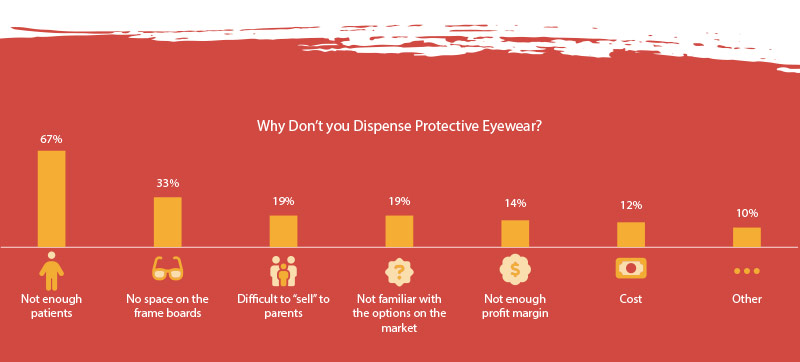
/ / DISPENSING PROTECTIVE SPORTS EYEWEAR
The majority (87%) of respondents report that their practice dispenses protective sports eyewear. Of those respondents who say their practice does not dispense protective sports eyewear, two-thirds (67%) say it’s because they do not have enough patients, while one-third (33%) say they have no space on frame boards to display these products. One in five (19%) of those that do not dispense sports protective eyewear say they are unfamiliar with the options on the market.
Among those that do not dispense protective sport eyewear, about one in five (19%) say they find protective sports eyewear to be a difficult sell to parents, with Optometrists/Ophthalmologists (26%) more than twice as likely than Opticians/Dispensers (13%) to cite this difficulty in selling. Optometrists/Ophthalmologists are also slightly more likely than Opticians/Dispensers to identify cost (15% vs. 8%) as a reason they do not dispense.

/ / PROMOTING PROTECTIVE SPORTS EYEWEAR
Half (50%) of respondents says they promote protective sports eyewear through merchandising or marketing material supplied by the manufacturer. About three in ten (30%) do so via their website or social media, while one in five (19%) interact with schools, coaches, and athletic trainers. Only 10% utilize Eblasts to parents/patients as a promotional opportunity.
/ / FACTORS INFLUENCING DECISION TO RECOMMEND PROTECTIVE SPORTS EYEWEAR
INFLUENCE OF AGE AND GENDER
Most respondents (70%) surveyed say that age is an important factor in influencing their decision to recommend protective sports eyewear to their patients, but a patient’s gender is not an important factor (69%).
VISION CORRECTION
Virtually all respondents say a patient’s prescription vision correction is an important consideration in their decision to recommend protective sports eyewear, with 96% of those surveyed seeing it as important factor for patients who currently wear prescription glasses for sports and 91% seeing it as an important factor for patients who currently wear contact lenses for sports. Nearly all (96%) say that the specific sport/activity/hobby played by the patient is also important. Eight in ten (81%) agree that all children need protective sports eyewear while playing sports regardless of whether they wear glasses or contact lenses.
COST AND INSURANCE
The majority (79%) of optical professionals surveyed say cost is an important factor when it comes to recommending protective sports eyewear. Six in ten (62%) say it is the top reason patients give them for not wanting protective sports eyewear.
The majority of respondents (63%) say a patient’s insurance plan is not an important factor when it comes to their recommending protective sports eyewear, but 44% of them say it is a significant reason patients give them for not wanting protective sports eyewear.
According to those surveyed, other reasons patients say they do not want to purchase protective sports eyewear is because they don’t think it is needed for the sports they play (48%), is “not cool” (40%), they think it will be uncomfortable (39%), or believe it will affect their vision while playing (28%).
/ / PROTECTIVE SPORTS EYEWEAR FEATURES AND MATERIALS
Three-quarters (73%) of respondents say they use polycarbonate lenses in the appropriate minimum lens thickness all the time, while an additional one in five (20%) say they use them most of the time when selecting a lens for prescription protective sports eyewear.
About nine in ten (93%) of those surveyed say frame material is an important property that influences their decision to recommend protective sports eyewear. Respondents also note the importance of properties such as ultraviolet protection (92%) and anti-reflective coating of lenses (74%) as important properties.
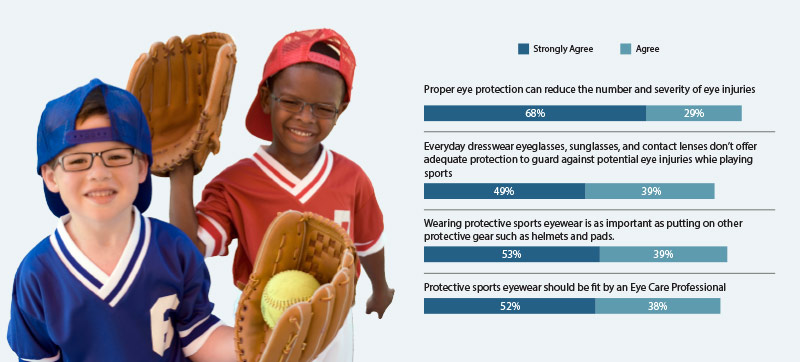
/ / ATTITUDES ABOUT PROTECTIVE SPORTS EYEWEAR
There is strong agreement among eye care professionals surveyed about the importance of protecting eyes during sports activities. Nearly all (97%) agree that proper eye protection can reduce the number and severity of eye injuries, while 9 in 10 agree everyday dresswear eyeglasses and sunglasses don’t offer adequate protection to guard against potential eye injuries while playing sports (89%), and that wearing protective sports eyewear is as important as putting on other protective gear such as helmets and pads (92%).
Survey Method and Sample
This study was conducted by Jobson Optical Research; fielded in September 2022. A total of 57,826 Eye Care Professionals were contacted via email and invited to click on a link to complete a survey. An incentive of a chance to win a $10 Amazon.com Gift Card was offered to entice participants. A total of 388 qualified respondents (0.67% response rate) completed the survey.
Respondent Demographics
Survey respondents were mainly Optometrists (46%) and Opticians/Optical Dispensers (47%). Optical Staff (4%), Ophthalmologists (0.8%) and others, such as office managers, accounted for two percent of respondents. About six in ten (57%) respondents identified as female and 42% as male. Six in ten (60%) say they are currently practicing in a single location practice, with the remaining respondents reporting working in practices with 2-3 locations (28%), Group/Chain of more than 10 locations (7%), and Group/Chain of 4-10 locations (5%). The majority of responses (75%) were received by those who have been in practice or working in the optical industry 15 years or more.
This sample size yields a 95% confidence level with a 5% margin of error.
Protect. Prevent. Play. is an educational resource designed to help eye care professionals educate parents, coaches, teachers, athletic trainers and athletes of all ages and skill levels about the importance of wearing appropriate protective eyewear to help reduce the chance of eye injury. Visit https://www.sportsvision.pro/athletes/protectpreventplay/ for more information.
Eyewear that fits well can help reduce injuries and increase compliance. Nine in ten (90%) respondents agree that protective sports eyewear should be fit by an eye care professional.
